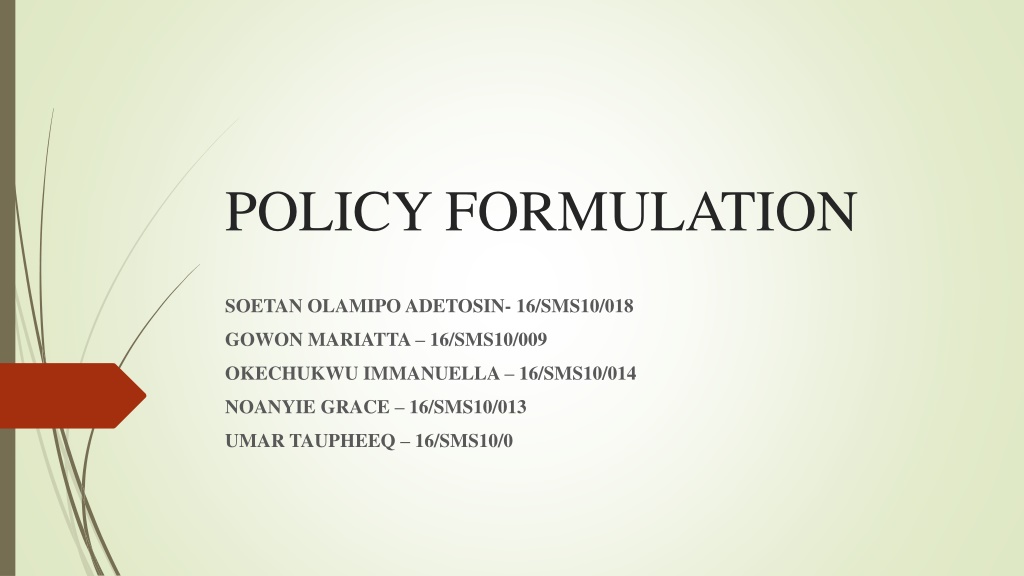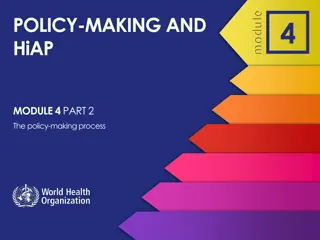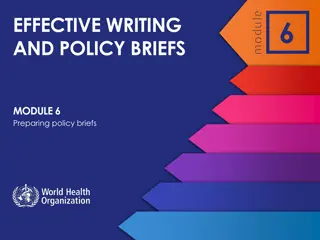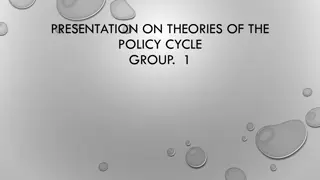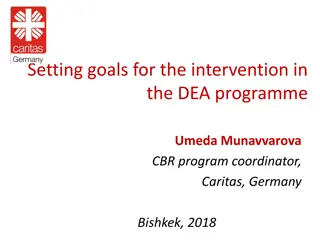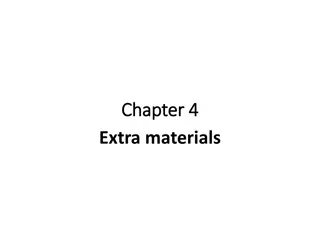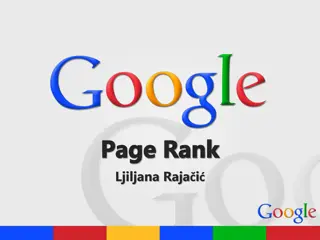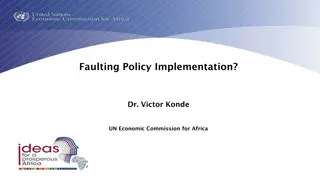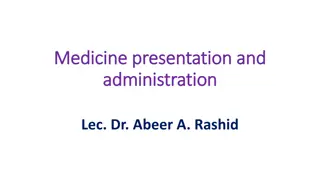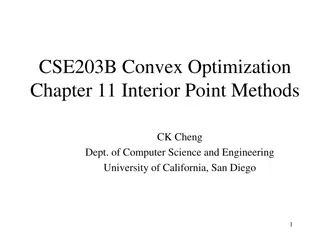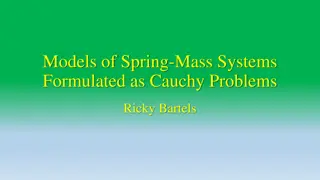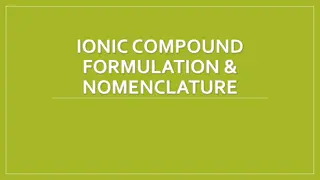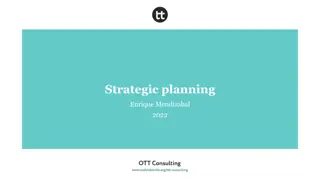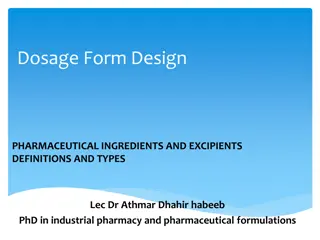Understanding Policy Formulation: Key Concepts and Approaches
Policy formulation is a crucial step in the policy-making process, involving identifying and crafting policy alternatives to address various issues. This phase requires participants to define policy problems, develop alternatives, and select the most feasible solutions based on criteria such as feasibility, costs, and benefits. Scholars emphasize the importance of policy design in influencing implementation outcomes and suggest improving the process of generating policy alternatives to enhance policy effectiveness.
Download Presentation

Please find below an Image/Link to download the presentation.
The content on the website is provided AS IS for your information and personal use only. It may not be sold, licensed, or shared on other websites without obtaining consent from the author. Download presentation by click this link. If you encounter any issues during the download, it is possible that the publisher has removed the file from their server.
E N D
Presentation Transcript
POLICY FORMULATION SOETAN OLAMIPO ADETOSIN- 16/SMS10/018 GOWON MARIATTA 16/SMS10/009 OKECHUKWU IMMANUELLA 16/SMS10/014 NOANYIE GRACE 16/SMS10/013 UMAR TAUPHEEQ 16/SMS10/0
INTRODUCTION Policy formulation is a part of the pre-decision phase of policy making . It involves identifying/crafting a set of policy alternatives to address a problem and narrowing that set of solutions in preparation for the final policy decision. It gives answers questions like: What is the plan for dealing with the problem? What are the goals and priorities? What options are available to achieve these goals? What are the cost and benefits of each of the options? What externalities, positive or negative are associated with each alternative?
IINTRODUCTION policy formulation assumes that participants in the policy process have already recognized and defined a policy problem, and moved it onto the policy agenda. Formulating the set of alternatives involves identifying a range of broad approaches to a problem, and then identifying and designing the specific sets of policy tools that constitute each approach. Selecting from these a smaller set of possible solutions from which decision makers will actually choose involves applying some set of criteria to the alternatives. For example; judging their feasibility, political acceptability, costs, benefits, Etc. fewer participants are expected to be involved in policy formulation than they were in the agenda setting process. Policy formulation is a critical phase of the policy process. This is because designing the alternatives that decision makers will consider directly influences the ultimate policy choice.
APPROACHES TO POLICY FORMULATION: POLICY DESIGN POLICY DESIGN Policy design theorists argued that scholars should look further back in the causal chain to understand why policies succeed or fail, because the original policy formulation processes, and the policy designs themselves, significantly contribute to implementation outcomes. Research on policy formulation seeks to understand the context in which the decision makers act and to identify the selectivity in attention that occurs. Often the aim is to bring awareness of the boundaries of rationality to the design process in order to expand the search for solutions, in hopes of improving the policies that result.
APPROACHES TO POLICY FORMULATION: POLICY DESIGN Some scholars have written from the perspective of professional policy analysts, exploring how notions of policy design can improve the practice of policy analysis and the recommendations that analysts make. Their purpose is an applied one they hope to improve the process of designing policy alternatives. They propose that improving the search for, and generation of, policy alternatives will lead to more effective and successful policies Essentially, these scholars seek to reduce the randomness of policy formulation (e.g., as portrayed in the garbage can model) by bringing awareness to, and then consciously structuring, the process. Scholars who approach policy design from an academic research perspective typically seek to develop a framework that can improve our understanding, analysis, and evaluation of policy processes and their consequences
APPROACHES TO POLICY TOOLS Bardarch appendix things government do in his eight step framework of policy analysis describes policy tools as; taxes, regulation, grants, services, budgets, rights, information etc. for each tool, he suggests why and how it might be used and what some of the possible pitfalls may be, aiming to stimulate creativity in crafting policy. research on policy tools highlights the political consequences of particular tools, as well as their underlying assumptions about problems, people, and behavior. tools require distinctive sets of management skills and knowledge, thus the choice of tools ultimately influences the nature of public management. Tools also carry with them particular assumptions about cause and about behavioral motivations
POLICY DESIGN BEYOND THE STAGES MODEL The most recent advance in the study of policy formulation and policy tools is Schneider and Ingram s policy design framework (1997). In their book, Policy Design for Democracy, the authors present a framework that pushes past a simple stages model by conceptualizing an iterative process. It offers some predictions about the types of policy designs that will emerge from different types of political processes, and it explicitly incorporates normative analysis by considering the impact of policy designs on target groups and on democratic practice. Schneider and Ingram are particularly concerned about the impacts of policy designs that result from degenerative political processes During such processes, political actors sort target populations into deserving and undeserving groups as justification for channeling benefits or punishments to them
POLICY DESIGN This framework posits policy designs as institutional structures consisting of identifiable elements: goals, target groups, agents, an implementation structure, tools, rules, rationales, and assumptions. Policy designs thus include tools, but this approach also pushes scholars to look for the explicit or implicit goals and assumptions that constitute part of the package.
POLICY FORMULATION Policy making is seen to occur in a specific context, marked by distinctive institutions and ideas. Institutional arenas, whether Congress, the courts, the executive branch, and the like, have rules, norms, and procedures that affect actors choices and strategies. Additionally, policy making takes place at a particular moment in time, marked by particular dominant ideas related to the policy issue, to affected groups, to the proper role of government, etc. These ideas will influence actors arguments in favor of particular solutions, and their perceptions and preferences when they take specific policy decisions.
CONSEQUENCES Schneider and Ingram suggest that policy designs act as institutional engines of change, and analysis can trace how their dimensions influence political action. In doing so, designs establish incentives for some groups to participate in public life, and offer them resources for doing so. Other groups receive negative messages from policies. Schneider and Ingram s framework builds on arguments about policy feedback.
CONSEQUENCES Consequently, target groups whose understanding of the problem differs or who lack the expertise needed to use a policy s administrative procedures, will not receive the same degree of support or legitimacy from the policy; they will have greater barriers to overcome in order to achieve their goals The selection of a particular policy design also imposes lock-in effects. Once a choice is taken, the cost of adopting alternative solutions to the problem increase.
CRITIQUE Critiques of literature on policy formulation and policy tools may focus on the limitations of the stages model itself. That is, the specification of policy alternatives and the selection of policy tools does not follow neatly from the agenda setting process nor lead neatly into implementation. With their integrative framework that places policy designs at its center, Schneider and Ingram depart from the stages model and, with a growing community of scholars, offer a theory of public policy that directly addresses the question of who gets what, when, and how from government (Schneider and Ingram 2005). Critics charge that it lacks a cleSar mechanism of policy change that can be tested across cases (deLeon 2005).
